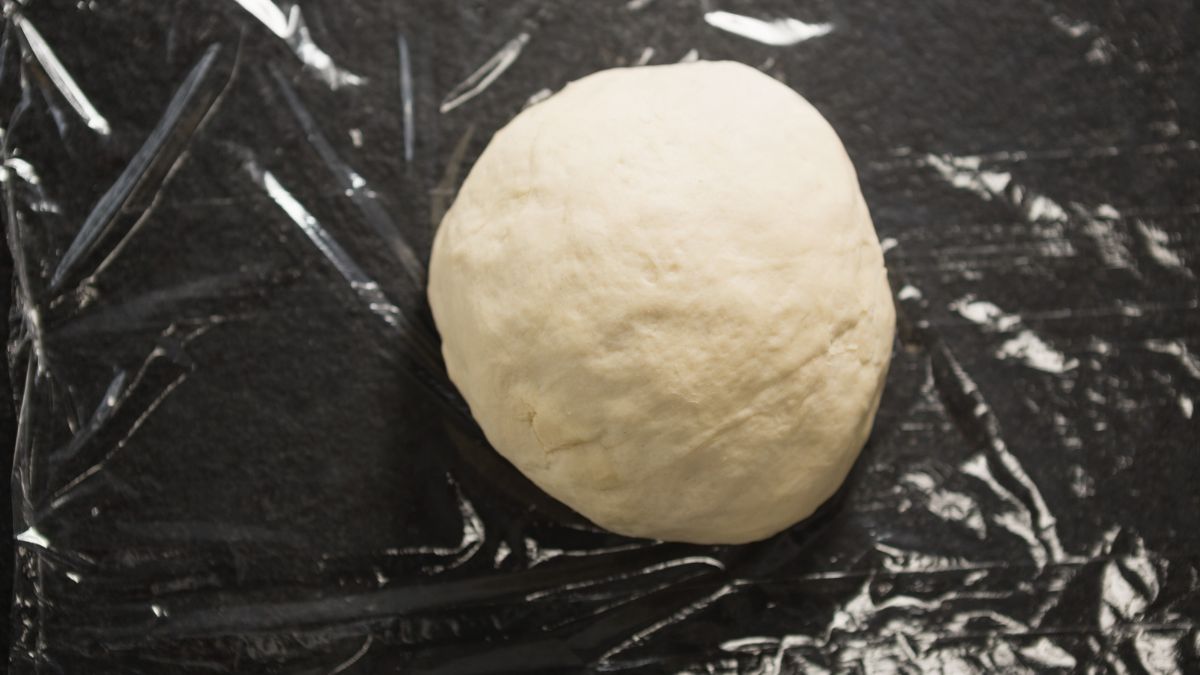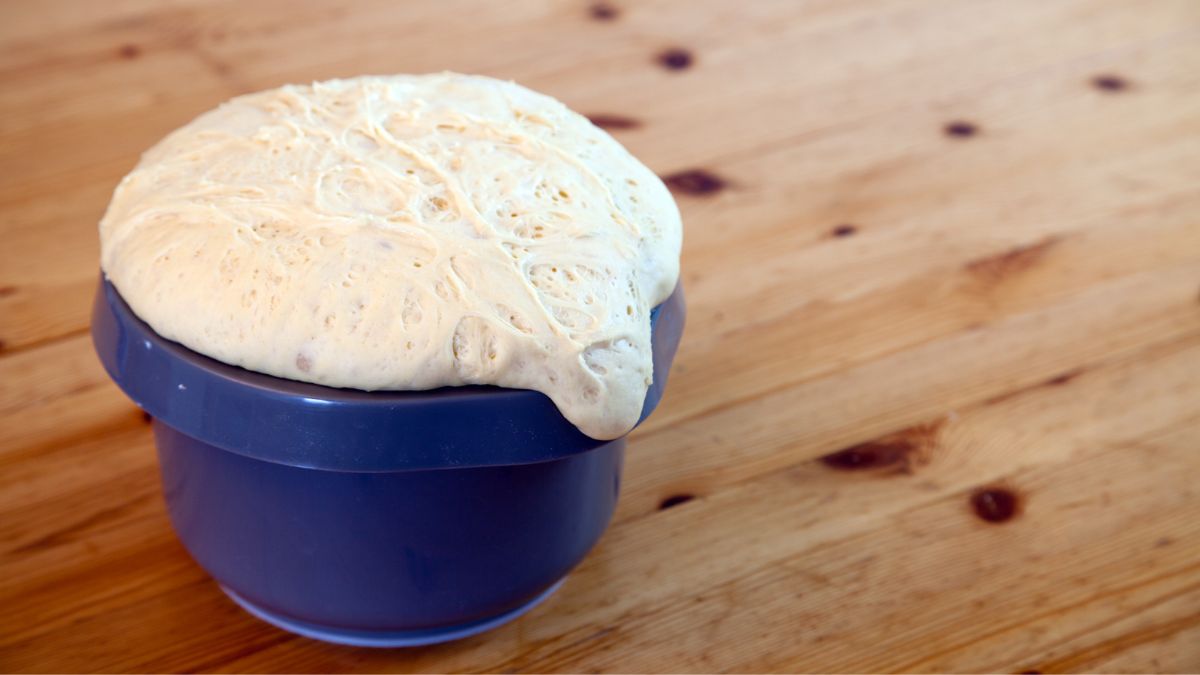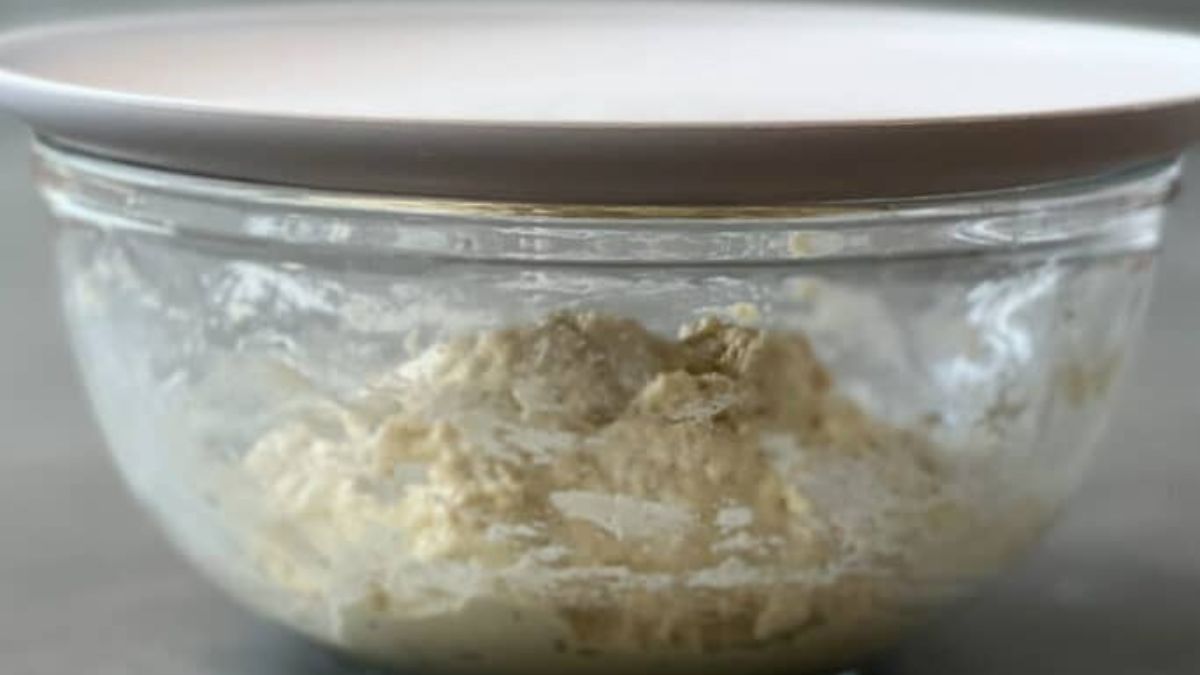What to Use Instead of Plastic Wrap for Dough?

Wrapping the dough is a very important part of the baking process. If you don’t cover the dough, it will dry out and rupture and may not rise enough. Usually, plastic wrap is the go-to option, but other alternatives from the kitchen may work even better. So what to use instead of plastic wrap for the dough?
Kitchen towels, zipper bags, silicone zipper bags, paper bags, tight lid containers, silicone stretch lids, a plate and a bowl, a shower hat, placing the dough in a warm place, parchment paper, aluminum foil, wax paper, silicone baking mat, flour sack towel are all great alternatives for plastic foil.
Plastic wrap is a very practical dough cover and an everyday kitchen item, so chances are, you’ll have it when you need it. However, for those moments when you are out of the plastic wrap and you need to move quickly, I will give you some ideas on what to use as an alternative.
Tight Lid Containers
If push comes to shove and you don’t have any other alternative, you will surely have some plastic containers lying around your kitchen. Pop the dough inside, but ensure it is large enough to contain it when it rises.
If your dough isn’t compact enough to lift and pop it into the container, leave it where it is and simply place it over it, covering it like a dome. Make sure you spray cooking oil on the inside walls and bottom of the plastic containers so that the dough doesn’t stick to them.
Zipper Bags
Zipper bags are an excellent substitute for plastic dough wrap. They won’t stick to the dough, and you can fit the entire dough inside so that it is well covered from each side. The downside is when the dough still hasn’t risen, and you fit it inside the bag, you don’t know if it will have enough space to rise fully.
So, always use large-size zipper bags; even when you think that they would fit your dough, don’t risk it. Also, you can use them another way, i.e., cut the bag in half and use it to cover the dough instead of placing it inside. This way, your zipper bag will have the exact same effect as a plastic cover.
Shower Hat
A shower hat dough cover may seem a far-fetched and ridiculous idea, but it does work. You can cover your dough with a shower cap if you want to let it rest on the counter or stretch the shower cap on the dough bowl.
If you cover the dough with a used shower cap, wash and dry it thoroughly so that you don’t have any hair falling on it. It won’t be the end of the world if it does, but it is best to avoid it.
Placing the Dough in a Warm Place
Sometimes, a good substitute for plastic dough wrap is no wrap. If you want to let your dough breathe or you simply don’t trust any other wrap except plastic, you can just let your dough rest in a warm place. A word to the wise, dough, a warm place doesn’t imply the oven or any other appliance used for baking or reheating.
It means leaving it in a warm room, near the radiators, or another heat source you have at home.

Paper Bags
Suppose your dough is soft but dry and doesn’t stick. Paper bags are a horrible idea for soft and sticky dough, so if your dough is like that, choose another one of these alternatives.
You can either place the dough inside the bag, or you can cut the bag and use it to cover the dough. Paper bags work great as they are highly absorbent and will suck in the surrounding moisture in the air or any excess moisture from the dough.
Kitchen Towel
A kitchen towel is an excellent alternative to plastic dough wrap, but it doesn’t work every time. If your dough is soft and sticky, a kitchen towel wrap is a bad idea because it will stick to the dough. Even though you can place it on the rims of the dough bowl without touching the dough, once it rises, it may stick to the towel.
You can spray water on the kitchen towel so it doesn’t stick, but it still isn’t a good idea, as the dough may absorb some moisture.
Therefore, a kitchen towel is a good dough wrap when the dough is compact, elastic, and dry, such as for white bread.
Parchment Paper
Parchment paper is another excellent idea to cover your dough. It is very smooth, and it doesn’t stick. You can use parchment paper for both sticky and non-sticky dough. You can wrap the entire dough in parchment paper or cover it on top if you place it in a bowl.
Once the dough rises, you can simply cut the parchment paper instead of looking for an edge to unwrap it from.
Aluminum Foil
Aluminum foil is one of the best dough wraps. It is very easy to handle, and if you realize that your aluminum foil piece is too small, you can always do more, as the other pieces will stay in place because the aluminum foil isn’t one of those wrappers that work only in one piece.
Still, aluminum foil has a downside; it isn’t flexible and ruptures easily. Therefore if your dough rises more than you expected, it can rupture the foil. So, always use larger foil pieces and leave the dough enough room to rise completely.
The good news is that aluminum foil doesn’t stick, so you can unwrap the dough quickly. Also, if your dog is in a bowl, you can make a surprisingly tight aluminum foil lid.
Silicone Zipper Bags
Silicon zipper bags are excellent substitutes for plastic dough covers. They expand as the dough rises, and they won’t stick. Also, silicon zipper bags are robust and keep your dough safe.
Many shapes and sizes are available for silicone bags, so you will have no trouble finding the right one. Moreover, there are silicon bags made specifically for dough. You can knead your dough directly inside the bag, thus avoiding mess in your kitchen.
A Plate and a Bowl
If you don’t have any other option, why not make your own container? All you need are a bowl and a plate. Spray them both with cooking oil and pop the dough inside the bowl. Cover the bowl with a plate; you will have a great dough container in a few seconds.
If your dough is too soft and sticky and you cannot lift and place it in a bowl, reverse the process, i.e., place it in the plate and cover it with the bowl.

Silicone Stretch Lids
This is the perfect solution for you if you have the habit of kneading dough in a bowl. It can work if your dough is compact and stable enough to place in a bowl after you knead it on the counter.
Simply place the silicon stretch lid on the rims of the bowl, thus covering the entire opening. There are silicone stretch lids of different sizes, and they are very stretchy, so they will cover your entire bowl opening, no matter its size. They are also very tight, so you can rest assured that air won’t penetrate the dough.
Wax Paper
Many consider parchment paper and wax paper to be the same, and in this case, their differences don’t matter, but they are not the same thing. Parchment paper is covered in silicon to resist heat, and wax paper is covered in paraffin to resist moisture.
If your dough is moister and greasier, you can use wax paper to cover it as it won’t absorb any of the moisture and grease.
Silicone Baking Mat
Just like the silicone zipper bag, the silicone baking mat is a very handy dough cover. It is soft, gentle, and easy to manipulate, so you can place it in any way that works best for you. It is non-stick, so no matter what your dough looks like, it won’t stick to it.
You can use it to cover your dough plate and the dough directly. You can smear some cooking oil on the silicon baking mat, just in case.
Flour Sack Towel
It sounds like it is something special, but it isn’t. A flour sack towel is your flour sack cut and spread over the dough. It is an excellent solution because flour is stuck to it, which creates an extra layer that makes your flour sack non-stick.
Still, I don’t recommend you use the flour sack towel with sticky dough, as you will definitely have trouble removing it. I also don’t recommend you wrap the dough with the flour sack towel, but just cover it loosely.
Oilcloth
Although you probably use an oilcloth to cover your table or maybe knead your dough on, it also works great as a dough cover. It is non-stick and easy to clean. You can use it to cover the dough bowl or even wrap the dough with it.
However, you should spray oil on it to ensure that your dough will slide right out of it. If you cover the dough bowl with the oilcloth, you don’t have to smear it with oil.
